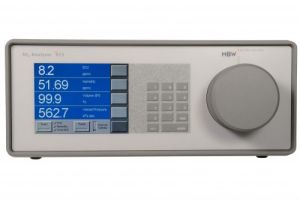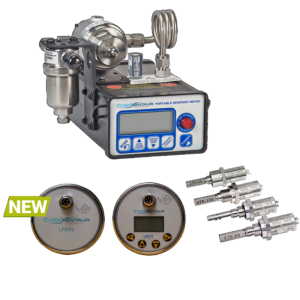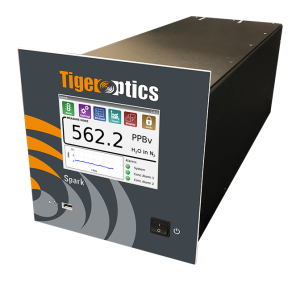Battery Manufacturing
Lithium-Ion Battery Production
RELIABLE Trace O2, N2, and H2O Gas Detection for Improved Lithium-Ion Battery Manufacturing
Battery technology continues to advance to meet the ever-growing need for energy storage and transport. With increased demand for electric vehicles and consumer electronics, and the environmental imperative to harness clean energy, lithium-ion battery production and development is more important than ever before, and battery manufacturers need optimized process technologies to ensure quality and efficiency in their operations.
Trace gas detection of O2, N2, and H2O is important for improved lithium-ion battery manufacturing because these gases can have a significant impact on the quality and performance of the batteries. Process Insights offers the very best in gas and liquid analyzers for process, safety and laboratory applications to help you monitor quality where you need it most. We can help you achieve consistent product quality across the battery manufacturing processes to improve yield and increase efficiency. Our team of measurement, control and applications experts, and full-scale global service network makes Process Insights the trusted partner you deserve and need.
We offer you a suite of field-proven technologies that will provide you premium insights into your process, increased reliability and deliver higher quality product consistently to protect your bottom line.
Process Insights: We are revolutionizing measurement everywhere™!
Process Insights is the industry expert in trace gas analysis
- Real-time detection of trace gas contamination
- Unmatched accuracy for N2, O2, and H2O
- Proprietary technology to ensure zero cross-interference
- Stable, drift-free, long-term operation for confident gas purity verification
- Easy to integrate and use with minimal maintenance and calibration required
Process Insights gas analyzers quickly alert operations to dangerous gas contamination
From electrode manufacturing to cell finishing, lithium and the electrolyte must be protected from exposure to nitrogen, oxygen and moisture from air and other sources. This is accomplished using vacuum and inert gas atmospheres (usually consisting of argon or helium). Product contamination can occur from even trace amounts of air within the pure-gas production environment. Nitrogen and oxygen exposure, for example, will dramatically impact quality, shortening the service life of the battery, and moisture can lead to hydrofluoric acid buildup inside the cell, a safety hazard with the potential to cause breakdown and thermal runaway.
Process Insights gas analyzers rapidly detect and measure trace contamination at the ppm-level to ensure that operations can respond quickly and resolve the issue. Online trace gas analyzers from Process Insights protect the quality and safety of battery manufacturing while reducing operating costs. By using gas analyzers, operators can quickly identify the source of the contamination and take appropriate measures to resolve the issue. For example, if the gas analyzer detects high levels of O2 , it may indicate that there is a leak in the manufacturing process that needs to be addressed. Similarly, if the gas analyzer detects high levels of H2O, it may indicate that the humidity in the manufacturing environment is too high, which could be affecting the quality of the products.
UV-Vis (Ultraviolet-Visible) Spectroscopy
Our GUIDED WAVE™ analyzer systems make spectral measurements in both the UV/Vis and Near-Infrared (NIR) regions of the electromagnetic spectrum. Often analytes will give rise to overlapping peaks. In those situations, we employ multivariate statistical models to find the relationships between the overlapping bands and the property of interest. The most common modeling technique used with process spectroscopy is Partial Least Squares (PLS). In addition to full spectrum measurements, there are certain parameters that can be monitored with a simpler filter photometer system. A photometer uses pre-selected filters (wavelengths) to focus measurements on the spectral regions of interest. This can commonly be done for measurements such as color, water concentration, or binary mixtures.
UV-Vis spectroscopy can be used to measure many UV-Vis active compounds in both process and quality control environments. It can be employed to ensure the consistency and purity of materials used in various EV and battery manufacturing processes. It can be used to measure chemical concentrations, chemical purity, and physical properties.
Our GUIDED WAVE product line includes full scanning spectrometer systems capable of measuring multiple sample points, and a filter photometer system capable of measuring two separate sample points. Learn more

Not sure where to start? Need some help?
Just complete our Application Questionnaires.
Our Other Measurement Solutions
We are with you after the sale to support your analyzer and your people
Process Insights Global Service provides a wide range of after-sales services to proactively maintain your analytical instrumentation. With fast repair and rapid turnaround, OEM spare parts, emergency response, and qualified field service experts, we ensure you get the best value for maximized uptime and peace of mind. We can provide you with the expert execution on both large and small projects.
- Customer Application Questionnaire Review
- Complete Preliminary Project Evaluation
- Global Service and Support from Experts Located in Your Region
- Onsite, Online, and Factory Analyzer Training Available
- Spares, Upgrades and Performance Evaluations






